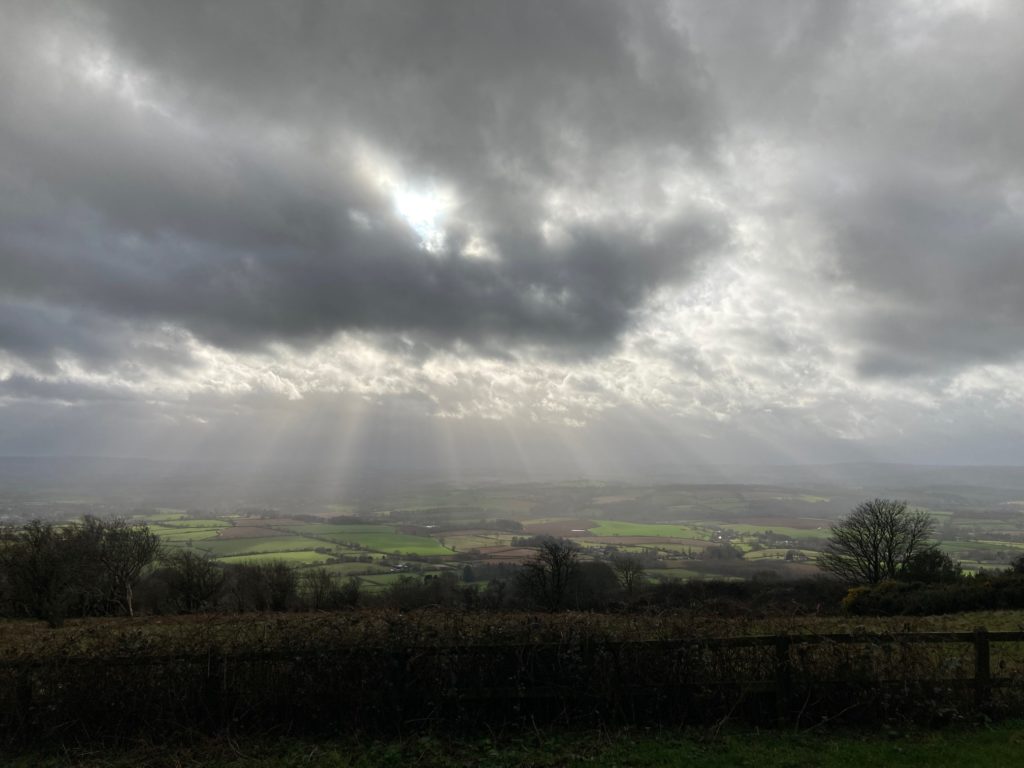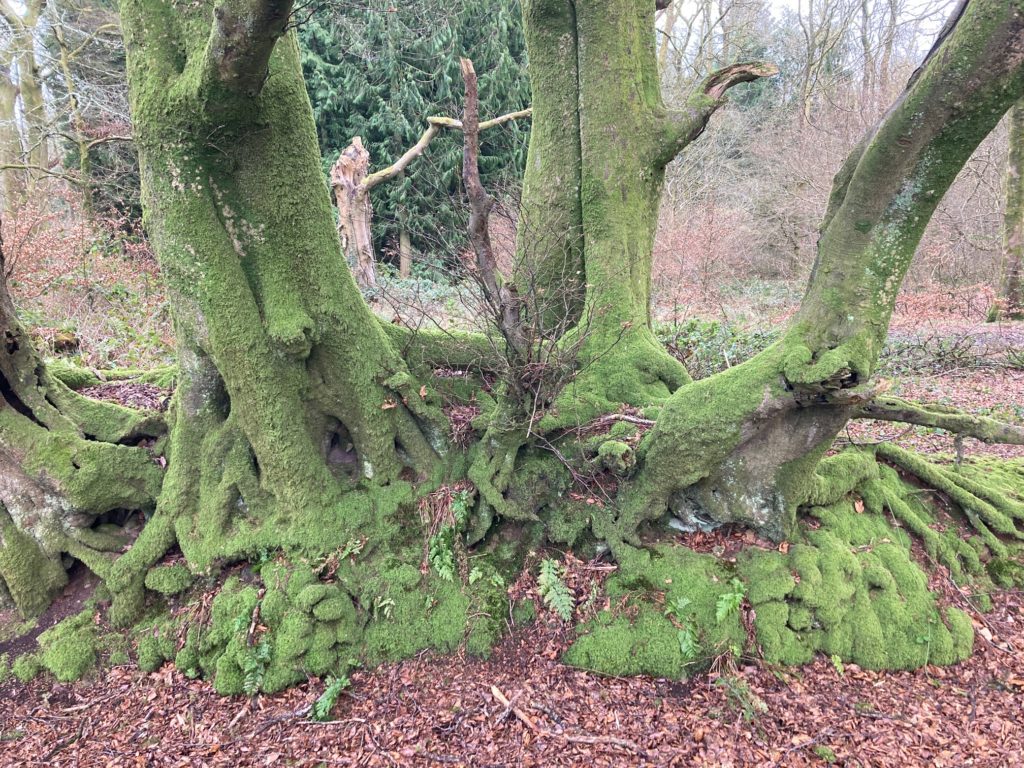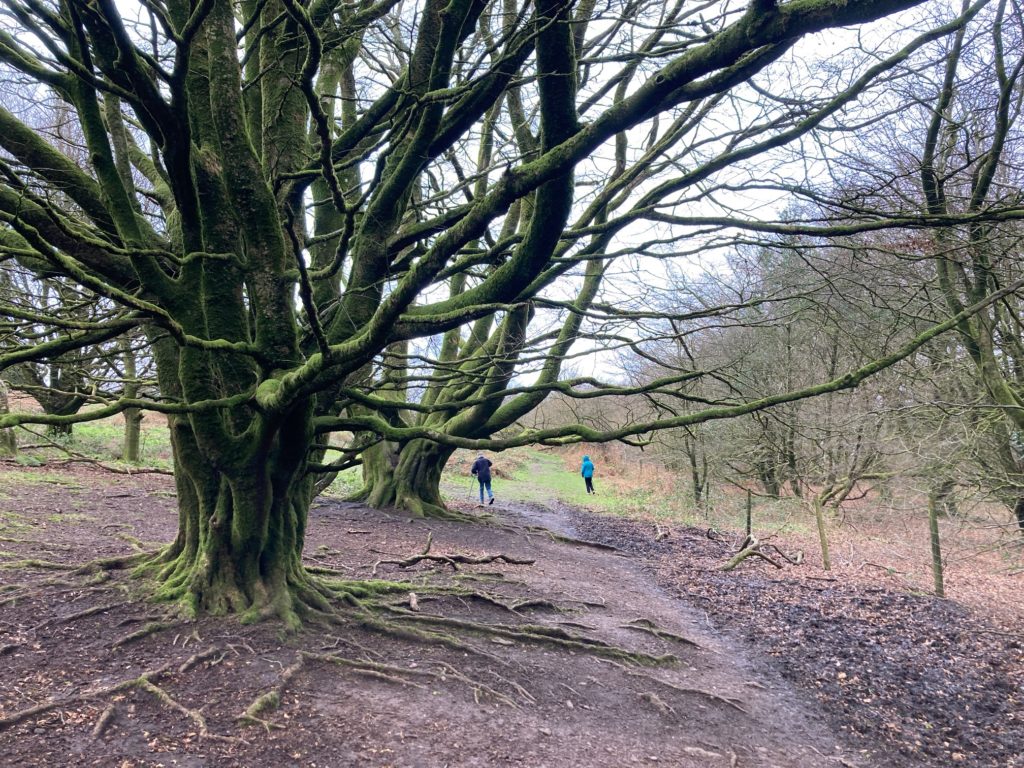What I think about when I think about walking: Mark Hooper finds divine inspiration on the Quantocks in Somerset.

The danger with writing about walking is the tendency to make it sound more profound than it is. You’re only going for a walk. Which is exactly why I headed to the Quantock Hills in Somerset: to trudge cheerfully though a steady drizzle, to take in the view when it revealed itself; to clear my head.
The Quantocks loom large over Taunton (the county town where I spent most of my childhood) — and over my memories. I’ve been here countless times, sometimes on school trips, camping in the woods, learning to map read or searching cluelessly for signs of glaciation. But mainly I came here on family walks, killing a few hours while the Sunday lunch was in the oven, or trying to wear our springer spaniel out, laughing at her as she bounced excitedly through the heather, picking up the scent of rabbits and birds that had long since fled the scene. We’d chat, catch up, mess around: the sort of walking you don’t really think about.
The Quantocks are a pretty barren place, made up of heathland and dense, dark, slightly sinister woods, with liberal splashes of purple gorse interrupting the ruddy greens and browns of the land. But the views here can be stunning. Looking north towards the Bristol Channel, or southwards over Taunton to the Blackdown Hills beyond, the light constantly plays across the fields as the clouds shift. Occasionally, if you’re lucky, they will seep rays of sunshine in great beams over the valley, as if sent direct from the heavens (or ET’s mothership). Not for nothing was this named England’s first official Area of Outstanding National Beauty (in 1956).

Inevitably, a walk here usually involves sheltering against the odd brick wall or under a canopy of trees as those same clouds deposit their load as they form and rise over the terrain. But that’s part of the charm. Somerset is a mild place in every sense: soft and green and ripe and verdant. The summers can be long-shadowed and hazy, but you don’t get all that greenness and ripeness without a heavy dose of rain, too.
Watching the showers sweep in from the Quantocks, first blurring and then obscuring them, is a sight that has captured the imagination of everyone from cricket commentators to poets over the years. John Le Carré mentions it on the second page of Tinker, Tailer, Soldier, Spy, writing:
The rain rolled like gun-smoke down the brown combes of the Quantocks…
That’s a brilliant description of Somerset rain: it often appears as a mist against the backdrop of the hills, getting denser until it envelops them. It’s also a deliberate nod to William Wordsworth who, in Book 14 of his The Prelude (1850), wrote:
Upon smooth Quantock’s airy ridge we roved, unchecked, or loitered ’mid her sylvan combes
The word ‘combe’ (meaning a steep, narrow valley or hollow in a hillside) isn’t unique to Somerset — it appears in the names of towns and villages across the country, from Sussex to Cumbria — but it seems particularly apt when describing the Quantocks, which is all dips and rises, ridges and recesses. It’s a feature that Wordsworth knew well, having moved from Cumbria to Somerset in 1797 with his sister Dorothy, spending a year walking on the Quantocks and composing poems with his friend, Samuel Taylor Coleridge, who lived in nearby Nether Stowey. It was here, in Coleridge Cottage — now owned by the National Trust — that he wrote many of his most famous works, including ‘The Nightingale’ and ‘The Rime of the Ancient Mariner’, both of which appear in Lyrical Ballads, the collection he and Wordsworth released in collaboration, which is generally thought to mark the birth of the English Romantic movement. While the poems (19 by Wordsworth, four by Coleridge), draw on a variety of influences, the shadow of the Quantocks can be felt in the sense of spirituality in nature.

In the same year, Coleridge also wrote ‘This Lime-tree Bower my Prison’, written under a lime tree in the garden of a friend and Nether Stowey neighbour, the philanthropist Thomas Poole, while his friends went walking on the Quantocks:
Friends, whom I never more may meet again,
On springy heath, along the hill-top edge,
Wander in gladness, and wind down, perchance,
To that still roaring dell, of which I told……Now, my friends emerge
Beneath the wide wide Heaven—and view again
The many-steepled tract magnificent
Of hilly fields and meadows, and the sea
Today, you can walk the 51-mile Coleridge Way, a planned route that leads you from Nether Stowey across the Quantocks and Exmoor. But that’s not the sort of walking I like to do. I prefer to get lost, jump though heather, laugh at dogs, shelter from showers and gasp at beams of sunlight. That way, you tend to stumble across the profound in the least expected of places.